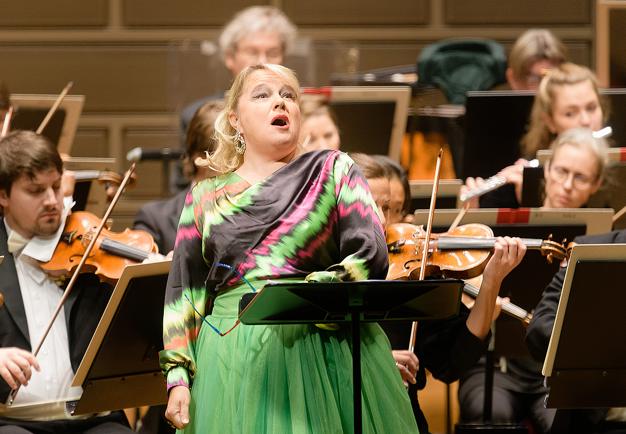Luonnotar

Anu Komsi is the soprano soloist in Luonnotar on May 22
Like a link between Anton Bruckner and American minimalism, the tone poem for soprano and orchestra has National Romantic ingredients, but its repetitive rhythms point forward in musical history.
Luonnotar has been performed by the Royal Stockholm Philharmonic Orchestra on 10 occasions. The first time was on 12 March 1933. Adolf Wiklund conducted and Carin Edelberg was the soprano soloist. That concert was devoted entirely to Sibelius’ music, and the same programme featured Symphony No. 2 as well as Autumn Evening and music from Pelléas and Mélisande.
Jean Sibelius
Luonnotar (Nature’s Daughter) Op. 70 (original version, 1913)
Durata approx. 9 mins.
In Finland’s national epic, the Kalevala, the creation of the world begins when Ilmatar, a goddess, leaves her airy existence and becomes impregnated by the sea. For seven hundred years she floats around with Väinämöinen in her belly, unable to give birth. A duck is looking for a place to build its nest, and Ilmatar reaches one knee out of the sea. But when her own pain becomes too great, she kicks out with her leg. The bird’s nest sinks, the eggs crack and the pieces become the earth, sky, sun, moon and stars.
Sibelius turned this story of creation into a tone poem for soprano and orchestra. He called it Luonnotar (Nature’s Daughter), which is another name for Ilmatar. The piece has been described as one of his most “relentlessly Finnish”. This interpretation is consistent with the National Romantic image of Sibelius.
Another interpretation emerges if you think of Luonnotar as a parallel to, for example, Stravinsky’s The Rite of Spring, which was first performed in Paris a few months before Luonnotar’s premiere at the Gloucester Music Festival in England. The primitivism of The Rite of Spring is based on notions of Russian national identity, but it was also an important step in the development of a modern, international musical style.
The same is true of Luonnotar. The inclusion of repetitive musical patterns can be seen as a link between Anton Bruckner and American minimalism. And when Sibelius finally depicts the world taking shape, the music moves away from tonality and forms a sonority that is rather difficult to reconcile with the composer’s declared aversion to the “modern tendency” in contemporary music.
Incidentally, the story of Ilmatar/Luonnotar is not based on Finnish folk poetry but is one of publisher Elias Lönnrot’s own contributions. His inspiration may have come from Indian mythology.
Tobias Lund
